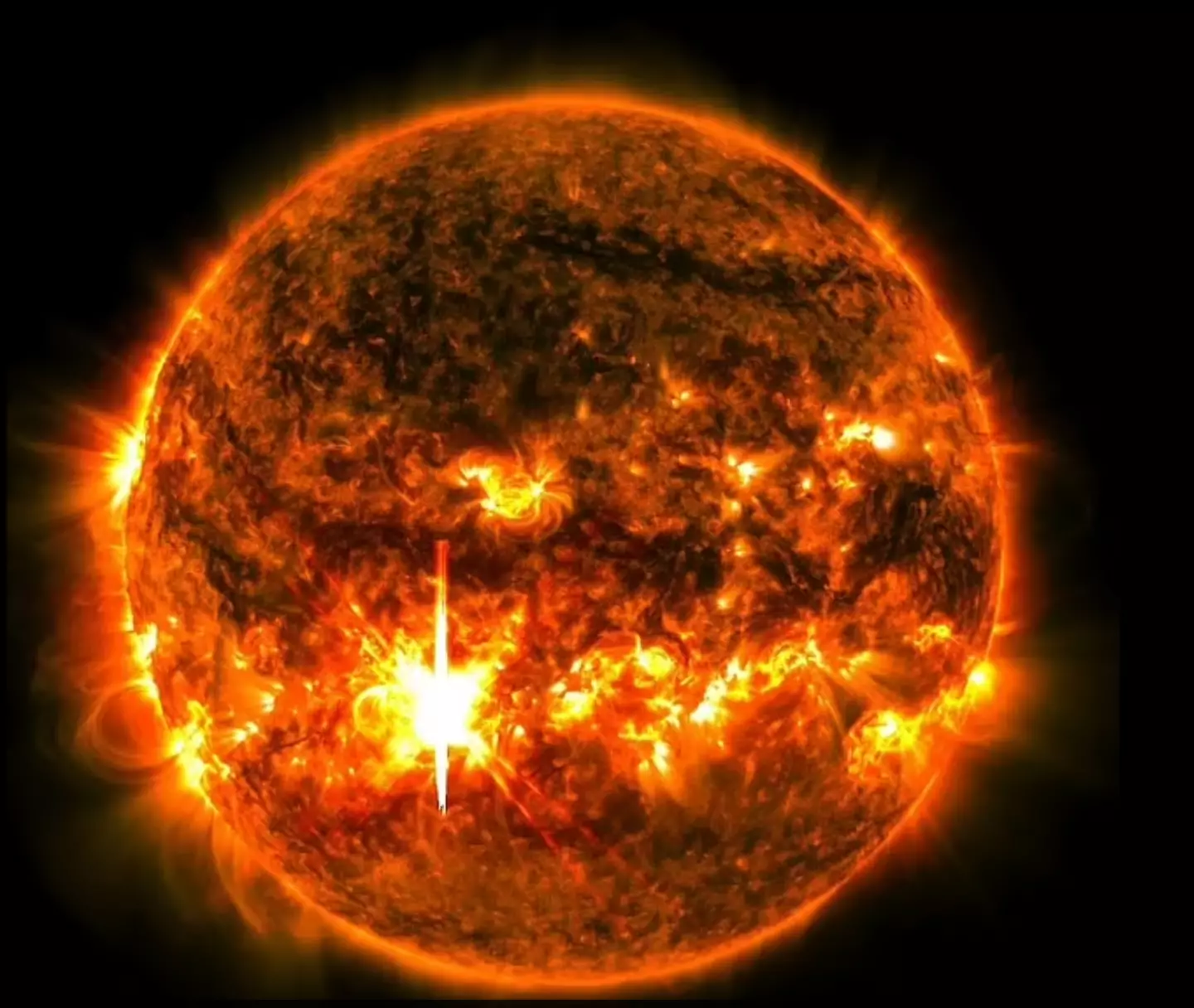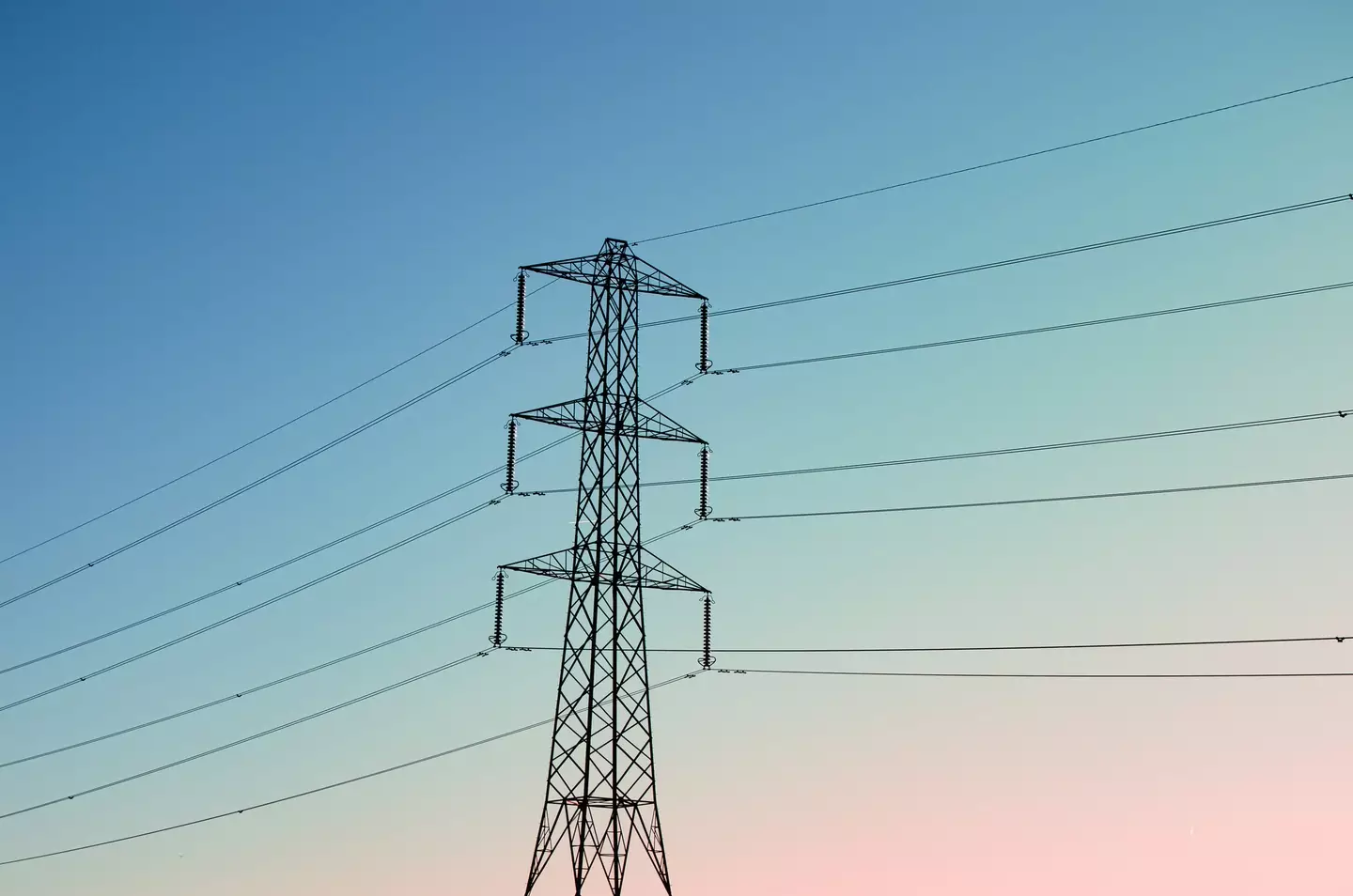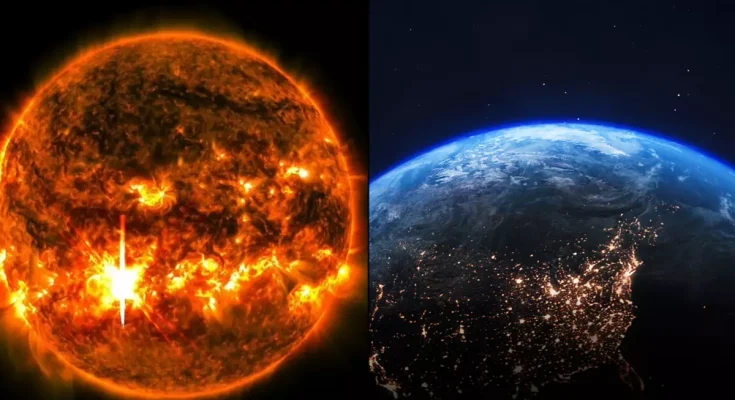The powerful solar flare might impact some aspects of our everyday lives, come the weekend
A huge ‘solar flare’ is set to hit Earth later this week after an eruption on Tuesday evening (3 October) that took place on the Sun.
It’s not the first solar flare-related week so far in 2024, as a solar storm was blasted towards our planet in May, following a number of coronal mass ejections (CMEs) from the sun after two large sunspots merged.
This meant that a lot of us in the UK could get a glimpse of the Northern Lights, a rare occurrence for the nation.

We’re about to feel the effects of another solar storm (NASA)
However, we’re back bracing ourselves for an ‘extreme geomagnetic storm’ after Sunspot AR3842, a dark, fast-growing region of strong magnetic fields along the sun’s surface, produced the second-strongest flare in the last five years.
Solar flares are classed by letters, with X being the largest class, meaning that it can potentially trigger radio blackouts and widespread damage to satellites, or even spacecraft or power grids.
M, C and B-class follow this, descending in order of how severe they are, while a scale of one to nine is within each class, to specify exactly how intense the flare is.
The largest flare since 2019 was that in May this year, when a X8.9 flare hurtled towards us, while Tuesday’s flare was rated as an X7.1 according to NASA.
It’s already caused a shortwave radio blackout over Hawaii and shot a CME into space, which the National Oceanic and Atmospheric Administration (NOAA) predicts will hit us early to mid-day on Saturday (5 October).

Radio blackouts and power grid outages could occur across the globe on Saturday (Getty Stock Photo)
Known as the largest explosive events in the solar system, the CME is currently hurtling at Earth at hundreds of miles a second, and when they impact our planet’s magnetosphere, which is the space around our planet that is taken up by its magnetic field, then geomagnetic storms take place.
These cause aurora displays such as the Northern Lights, while disturbances to satellite communications and power grids being damaged are also a possibility.
With the incoming solar storm, it further proves that the Sun has entered solar maximum, which is the period in its 11-year cycle when solar activity is at its most prominent.
Despite scientists predicting that this phase would take place in July 2025, activity on the Sun increased rapidly over the course of this year, and has forced experts to reassess their predictions.

The solar flares are set to keep coming, so these will keep getting affected (Getty Stock Photo)
So far in 2024, 41 X-class solar flares have been shot out, which is more than the number of these in the last nine years, put together, according to spaceweather.com.
Usually, X-class solar flares only happen 10 times a year, but with solar maximum expected to last another year at the least, we can expect to see more of these powerful solar flares, CMEs and geomagnetic storms affecting Earth in the next year or so.
Featured Image Credit: NASA / Getty Stock Photo



